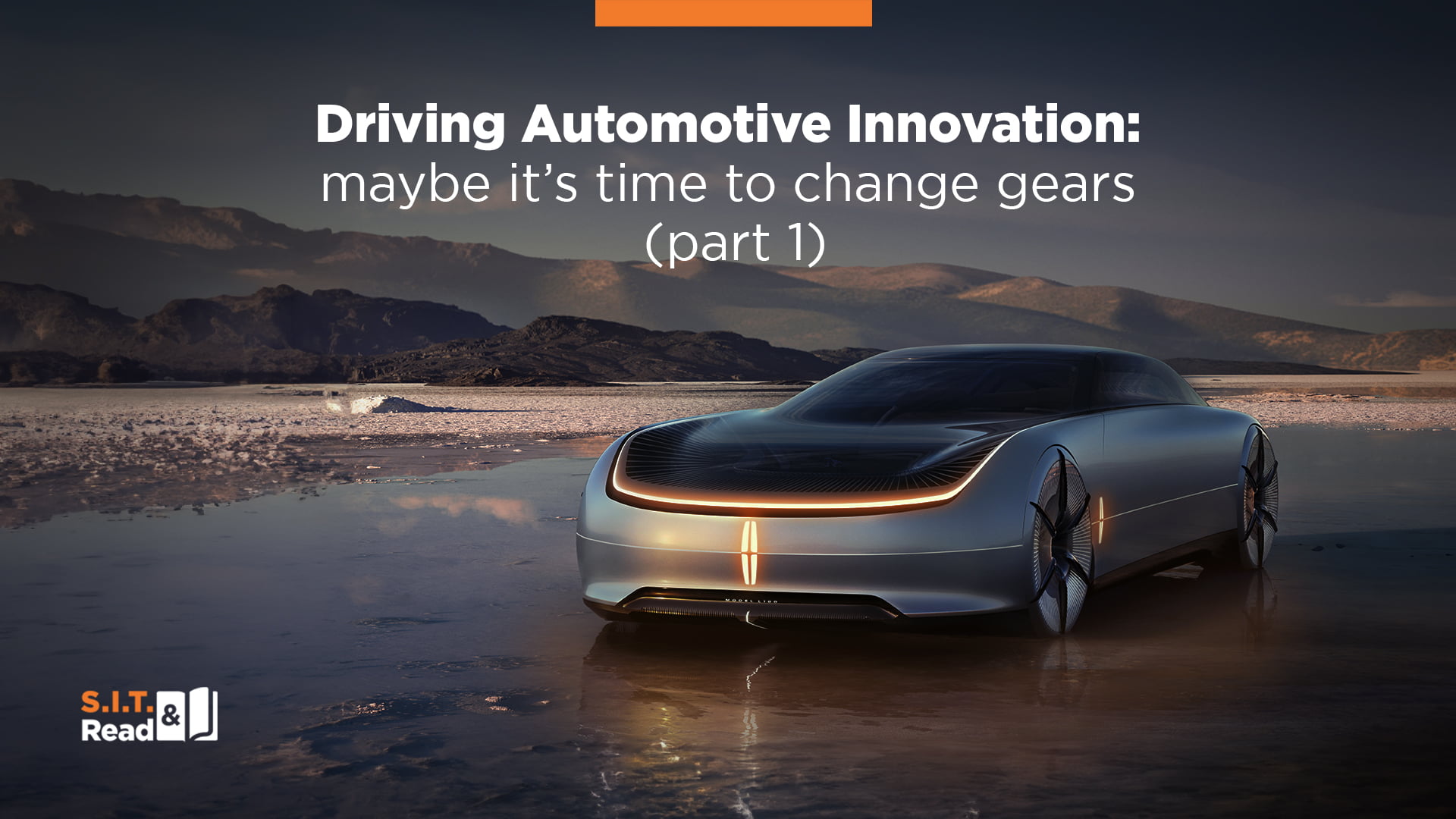A few weeks ago, I participated in a discussion organized by the innovation team of a very large car company. The discussion, naturally, had to do with innovation. Most of the participants were excited about new emerging technologies and the promise of almost-here self-driving cars.
I have been in these conversations many times before – people tend to confuse Innovation (New + Unique + Applicable) with new (better, stronger, faster, technology-based…). I thought that it will be interesting to try and analyze the state of innovation in the automotive industry and see what conclusions we can draw.
In the 1st part of this article, I will name the main forces that drive car innovation today and list the main areas of focus for this industry.
In part 2 I will share some recommendations for where, in my opinion, the industry should channel more attention and resources.
Part 1
Over the last 20+ years, I have collaborated and participated in innovation activities in the automotive sector. It’s widely known that regulations serve as a driving force behind automotive innovation. Every year, the public, due to new regulations put in place and the enforcement of existing regulations, expects new models to be more efficient, safer, more environmentally friendly, and more sustainable. Here as some of the key factors influencing the current state of innovation in car companies:
- Technological Parity: With technology becoming readily accessible to all players in a matter of months, gaining a technological advantage has become increasingly elusive. Automakers must now navigate a realm where everyone has access to similar advancements. Where does true innovation lie when the playing field is level?
- Battery Revolution: The remarkable drop in battery prices, a staggering 60% over the past five years, has ushered in a new era for electric vehicles (EVs). With the cost per kilowatt-hour (kWh) now at $250, compared to $1,000 in 2010, EVs are poised to achieve cost parity with their gasoline counterparts within the next five years. This revolution paves the way for more sustainable and environmentally friendly transportation.
- The Impact Equation: In general, economists have noted a decline in the impact of innovation on our lives, as new enabling technologies no longer exhibit the transformative power they once did.
- Changing the Rules: While many players focus on excelling within the existing automotive landscape, there is a bigger promise in changing the rules of the game. Automakers and adjacent industries should be investing their innovation efforts and resources in reshaping the very foundations of the industry. By challenging conventional wisdom, they will be more successful at unleashing untapped potential.
Many of the automotive developments we see, presented to us as innovation, are actually common practice and known among the category players.
There are many different characterizations and definitions for INNOVATION. To be able to distinguish it from ‘normal’ R&D, Continuous Improvement, Process Excellence and product / technology evolution, we apply a few different models. You can learn more about the main characteristics I used to create this list in this TED talk.
The leading topics in most of the innovation discussions I have seen, both physical and online, are:
- Re-designing the cockpit and updating the passenger experience.
- Minimizing the environmental footprint – supply chain, materials, carbon emission etc.
- Adapting bold and unique design platforms based on computer algorithms that allow different angles and cuts to be merged on surfaces in several layers.
- Evolution, continued improvements, available/affordable technologies.
- Electric cars – software, hardware, and engineering.
- Autonomous cars – pushing forward technologies and regulations.
- Advanced active safety systems with artificial intelligence, mainly based on the development of radar, sensors, and cameras to create augmented reality decoded by artificial intelligence capability.
- Major collaborations – for example: Ford and Google announced recently a unique strategic partnership that will accelerate innovation in the automotive industry and reinvent the customer experience in the connected car. Ford has also chosen Google Cloud as its preferred cloud provider, and will leverage Google’s global expertise in data, artificial intelligence (AI) and machine learning (ML). As part of the new six-year partnership, starting in 2023, millions of Ford and Lincoln cars of all price tags will be based on the Android operating system, including all Google services and applications.
- Data security and data privacy technologies.
- Augmented reality displays in vehicles.
- Wireless charging for electric vehicles.
- Advanced infotainment systems, including voice recognition and touchscreens.
- Vehicle-to-vehicle communication technology.
- Predictive maintenance using machine learning and AI.
- Augmented reality maintenance and repair guides for technicians.
This is a very long list!
While these are impactful improvements that will provide a lot of value to the market, I would consider these efforts as necessary, expected, common and good. This is ‘natural evolution’ of a healthy industry. In addition to that, I would expect to see some more unique, counter-intuitive directions.
In part two of this article we will suggest some possibilities to be considered by business and innovation leaders in the car industry.
